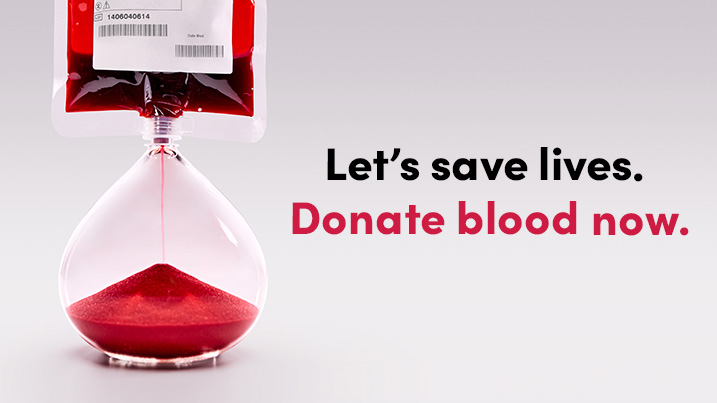Western Pennsylvania health systems launch campaign to increase blood donations as critical shortages persist

A coalition of western Pennsylvania hospitals and health care systems are coming together in a campaign to raise awareness about the importance of blood donation and to urge more people to become blood donors as supplies remain critically low at hospitals across the region.

Hospitals and health systems partnering in the campaign, which will include a range of public service announcements, digital media and outdoor promotion, include:
Allegheny Health Network Butler Health System
Conemaugh Health System Excela Health
Heritage Valley Health System Indiana Regional Medical Center
Sharon Regional Medical Center St. Clair Health
UPMC VA Pittsburgh Health System
Washington Health System Chan Soon-Shiong Medical Center at Windber
Nationally and locally, blood supplies have dropped precipitously in recent years, due largely to the COVID-19 pandemic, which lead to cancelled blood drives and a general sense of hesitancy among those who previously donated regularly.
While hospital in-house blood banks optimally maintain a four-day supply of blood, current supplies of the most transfused blood type “O”, as well as platelets, which must be used within seven days of collection, have dangerously dipped to below half that amount in many cases. The diminished blood supply combined with the sharp uptick in patients needing blood transfusions during the summer months, makes for a perfect storm that puts lives at risk, according to health officials.
The months of June, July and August are considered the peak trauma season for hospital emergency departments. “More people participating in sometimes risky outdoor activities and traveling during the summer means more traumatically injured patients hitting emergency departments and requiring blood transfusions,” said Allan Philp, MD, director of trauma and acute care surgery, AHN, and chief medical officer, Allegheny General Hospital.
According to nonprofit blood services provider Vitalant, the number of new donors is down by 12 percent year over year, with 92,000 fewer donors annually compared to pre-pandemic levels. Just three percent of the population donates blood regularly and a sharp, unexplainable decrease in younger donors has also impacted blood supplies.
“Every time you donate you help ensure a patient’s lifesaving treatment doesn’t have to be put on hold,” said Vitalant Chief Medical and Scientific Officer Dr. Ralph Vassallo. “When patient needs consistently outpace blood donors, chances are higher a leukemia patient won’t be able to get their regular transfusion, for example, or a patient will have their surgery delayed.”
Dr. Vassallo said blood donation takes about an hour of time to complete and a single donor can save up to three lives.
The multi-media public service campaign will launch in mid-July and run through the end of September, with placements scheduled throughout the region. Additionally, a microsite was created: www.givebloodsavelives.org that encourages people to conveniently schedule their donation through Vitalant or the Red Cross online.




